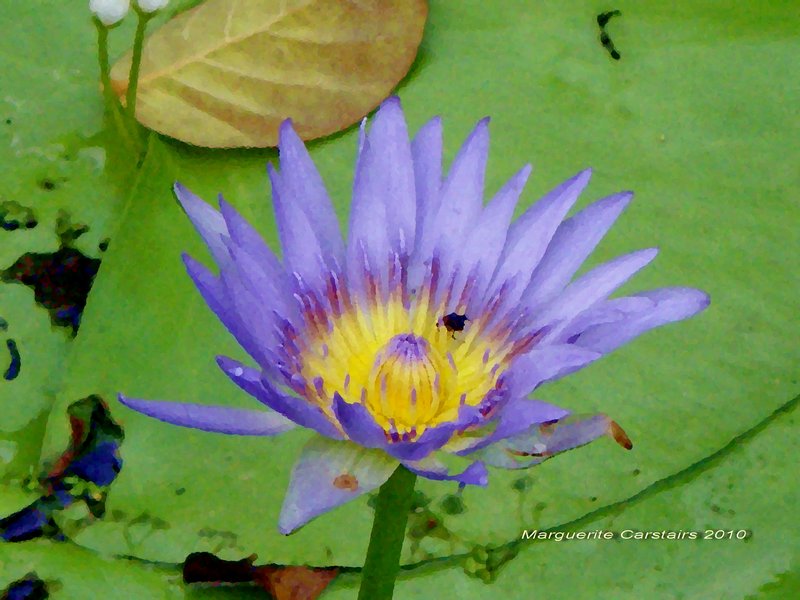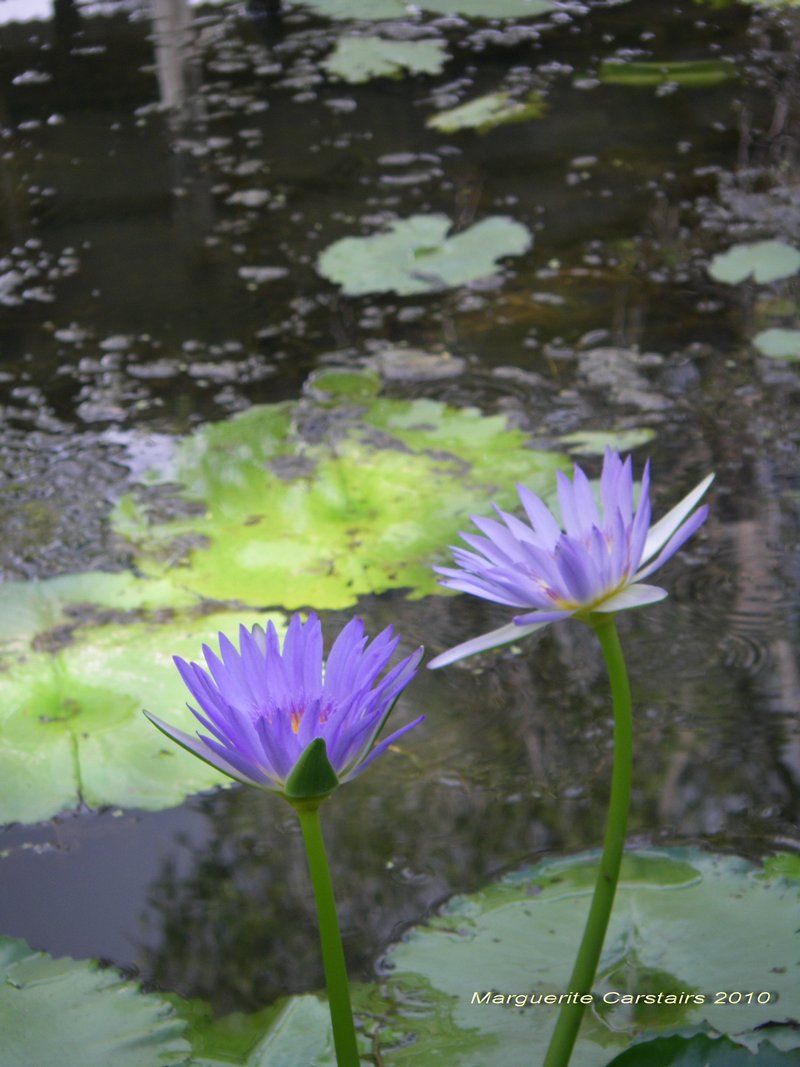Nymphaea Water Lily...a purple waterlily
Nymphaea caerulea has a long history of use, dating back thousands of years. A current use for the dried flowers is to soak a few in red wine overnight, strain and drink in moderation. The effects produced are evidently relaxing, sedating and produce a feeling of contentment. The flowers are also used in smoking blends or smoked alone.
The word Nymphaea is from a Greek word nymphaia meaning water nymph. Both the rhizomes and seeds can be eaten. Now a naturalised water plant in NSW and QLD, N. caerulea (also known as N. caerulea ssp. zanzibarensis) has replaced the native Nymphaea gigantea which is now considered locally extinct in SE Qld due to sedimentation and increased disturbance in waterways. It still occurs in tropical parts of Australia.
Care and cultivation Seed can be sown in spring and during summer (September-January). Finely sieved clean loam soil without any organic matter or fertiliser is best. Seed should be sown thinly, covered lightly with soil and then plunged into shallow water, no deeper than 2.5 cm, and placed in a sunny position. Germination should take 3-4 weeks The seedlings will look like fine grass at first, developing true leaves later. When the first two or three floating leaves appear the seedling should be pricked out and planted into individual containers and immersed back in the water. They may be submerged into deeper water and larger containers as they grow and lengthen. (taken from www.plantzafrica.com).
http://www.herbalistics.com.au/shop/product_info.php?products_id=228







140x45.jpg)




No comments:
Post a Comment